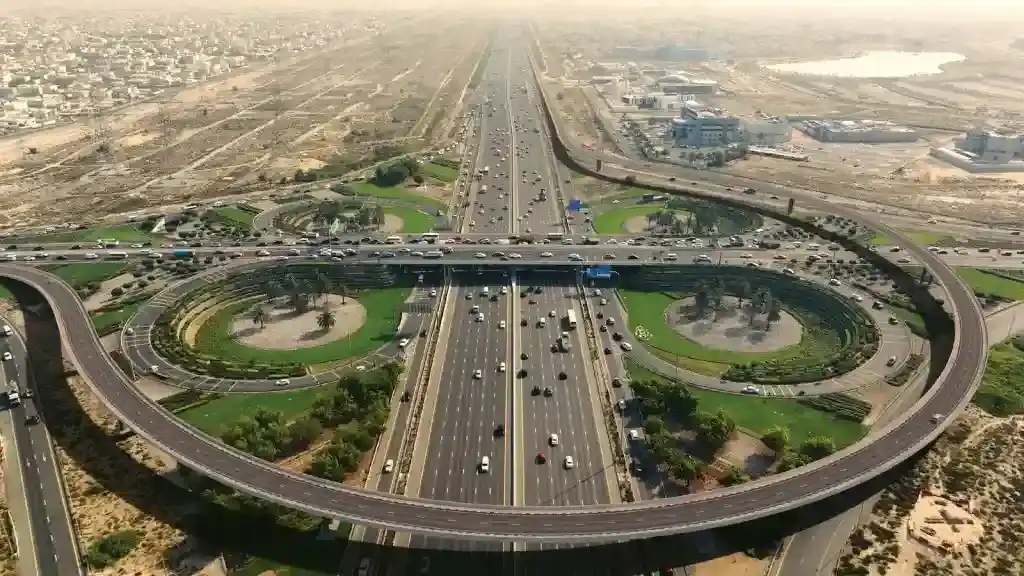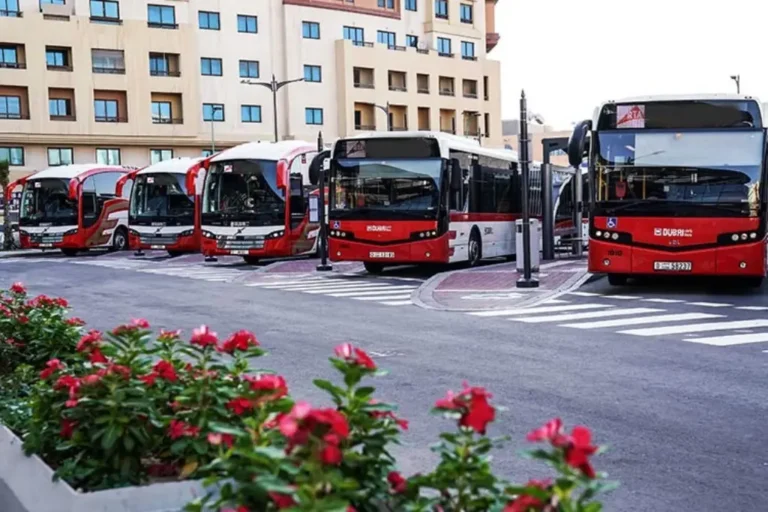Dubai’s Road and Transport Authority (RTA) opened, a major two-lane bridge connecting Hessa Street to Al Khail Road spanning across 1,000 meters to increase traffic flow from Hessa Street to Al Khail Road.
The two-lane bridge ensures a seamless traffic connectivity to Dubai’s city centre and Dubai International Airport, that will further reduce travel time from Hessa Street to Al Khail Road from 15 minutes to just 3 minutes. RTA announced that 54 percent of the Hessa Street development project, which includes the upgrade of four major intersections, has been completed. All intersections are expected to be fully operational by the fourth quarter of 2025.
The Director General and Chairman of the Board of Executive Directors of RTA, Mattar Al Tayer, stated, “Hessa Street development project, spanning 4.5 km from its intersection with Sheikh Zayed Road to its intersection with Al Khail Road, is being carried out under the directives of His Highness Sheikh Mohammed bin Rashid Al Maktoum, Vice President, Prime Minister and Ruler of Dubai, with the follow-up of H.H. Sheikh Hamdan bin Mohammed bin Rashid Al Maktoum, Crown Prince of Dubai, Deputy Prime Minister, Minister of Defence, Chairman of the Executive Council of Dubai. This project represents a continuation of efforts to develop road infrastructure to keep pace with the Emirate of Dubai’s continuous growth and to meet the demands of urban development and population expansion.”
He added, “The project includes upgrading four key intersections along Hessa Street: Sheikh Zayed Road, First Al Khail Road, Al Asayel Street, and Al Khail Road. It also involves widening Hessa Street from two lanes to four lanes in each direction, effectively doubling its capacity to accommodate up to 8,000 vehicles per hour. Additionally, a 13.5 km cycling track is being constructed, further enhancing connectivity and promoting sustainable mobility. The total cost of the project is AED 689 million.”
The Chairman of the Board of Executive Directors of RTA and Director General, further added, ,“Hessa Street development project is one of the key infrastructure projects aimed at enhancing Dubai’s road network. It serves several key residential and developmental areas, including Al Sufouh 2, Al Barsha Residential Area, and Jumeirah Village Circle. By 2030, the population in the areas served by this project is projected to exceed 640,000 residents. The project will double Hessa Street’s capacity, increasing it from 8,000 vehicles per hour in both directions to 16,000 vehicles per hour.”
The project involves the development of four major key intersections, the first is the intersection of Hessa Street with Sheikh Zayed Road, where a two-lane directional ramp will be constructed, passing over the Red Line of the Dubai Metro. The second intersection is at Hessa Street and First Al Khail Road, where the number of lanes on the existing Hessa Street bridge will be increased from three to four in each direction. Traffic improvements will also be implemented at the surface-level signalised junction to enhance flow.
The third intersection is at Hessa and Asayel Streets. Works include widening the current bridge from two to four lanes in each direction along Hessa Street, alongside upgrading the surface-level signalised intersection to improve traffic movement.
The fourth intersection to be developed is at Hessa Street and Al Khail Road. The works include constructing a two-lane direct ramp to ensure seamless traffic flow from Hessa Street onto Al Khail Road northbound toward Sharjah.
Cycling and Scooter Tracks
The Project also includes the construction of 13.5 km of cycling and e-scooter tracks, connecting Al Sufouh to Dubai Hills via Hessa Street. These tracks will serve several residential areas, including Al Barsha and Barsha Heights, while improving first and last-mile connectivity by linking with Dubai Internet City Metro Station and commercial and service hubs in the area.
A major highlight of the new cycling track is the introduction of two architecturally distinctive bridges for cyclists and pedestrians. The first bridge crosses Sheikh Zayed Road, while the second crosses Al Khail Road. Each bridge is five metres wide, with three metres designated for the cycling and e-scooter track and two metres for pedestrian pathways.
The project is designed to enhance first and last-mile journeys, providing seamless accessibility to key metro stations and nearby destinations. The track’s capacity is estimated at 5,200 users per hour, ensuring efficient use for both residents and visitors.
The major motive of the project is to enhance first and last-mile journeys, providing seamless accessibility to key metro stations and nearby destinations.
Source: wam.ae







